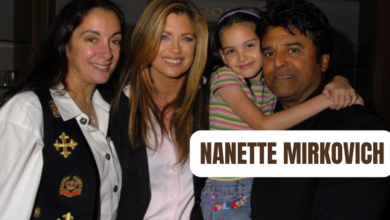If you grew up in the early 2000s, chances are you remember sitting in front of the TV and hearing the catchy theme song of Max & Ruby. The show, with its calm pace and simple but meaningful stories, became a favorite among preschoolers and even nostalgic for older kids and parents. For some families, it was more than just background entertainment. It was a gentle teaching tool, a comforting presence, and in some cases, the first TV show a child ever watched.
I’ll admit that I’ve had my own share of afternoons when Max & Ruby played in the background while little cousins or nieces were glued to the screen. At first, I thought it was just another cartoon. But as I paid more attention, I realized there was something unique about it. Unlike fast-paced, noisy shows that overwhelm young children, Max & Ruby took its time. It showed how siblings interact, argue, learn from each other, and eventually solve problems together. It was relatable, even if you weren’t a preschooler anymore.
In this article, we’ll take a deep dive into everything about Max & Ruby: its origins, characters, themes, fan theories, lessons for children, and why it continues to spark curiosity today. Whether you’re here because you’re a nostalgic fan, a parent considering it for your kids, or just curious about the memes and theories surrounding it, you’ll find everything you need.
Origins and Background
Max & Ruby began as a series of children’s books by Rosemary Wells. She wanted to create stories that reflected real sibling dynamics—especially the push and pull between an older, bossier sibling and a younger, freer one. The books gained popularity, and it wasn’t long before Nickelodeon picked up the idea to adapt them into a television series.
The show first aired in 2002 on Nick Jr. in the United States and quickly became a staple in children’s programming. Its calm pacing was intentional. Unlike shows filled with flashing colors, constant noise, and rapid cuts, Max & Ruby was designed to be slow and clear, so preschoolers could follow the story. Each episode usually consisted of three short segments, each focusing on a simple conflict or goal, like baking a cake, going to the store, or playing outside.
Over the years, Max & Ruby went through changes. New characters appeared, animation styles shifted slightly, and—most famously—after years of speculation, the show eventually introduced Max and Ruby’s parents. For many long-time fans, this was a shocking twist, since for most of the show’s history, the siblings lived seemingly on their own with only Grandma occasionally visiting.
Raed Also: The Complete Guide to LinkedIn’s Social Selling Index
Main Characters
Max
Max is the little brother, a curious, mischievous, and adventurous bunny. He doesn’t talk much in the earlier seasons—often using single words—but his actions speak volumes. Children often relate to him because he represents the freedom of imagination and the desire to explore without too many rules.
One of the charming aspects of Max’s character is how persistent he can be. Even when Ruby tries to organize things in her way, Max usually finds a clever or surprising solution. His role often balances Ruby’s seriousness, and in doing so, he shows children the value of thinking differently.
Ruby
Ruby, the older sister, is more responsible and nurturing. She often tries to guide Max, sometimes a little bossily, but always with good intentions. She represents structure, order, and maturity. Kids watching the show might recognize traits of their own older siblings in Ruby: sometimes protective, sometimes a little controlling, but always looking out for family.
Ruby’s character also connects strongly with parents watching alongside their children. Many adults appreciate how Ruby models patience and problem-solving, even when Max goes off track.
Grandma
Grandma plays a recurring but important role in the series. She’s warm, loving, and often the one who encourages creativity while also providing comfort. For kids who are close to their grandparents, this character adds an extra layer of relatability.
The Parents
For years, fans wondered: Where are Max and Ruby’s parents? The absence became one of the biggest mysteries in children’s television. Some viewers speculated that it was intentional, symbolizing independence or teaching kids problem-solving without adult interference. Others went down darker paths with theories, which circulated heavily online.
Eventually, in later seasons, the parents were introduced, ending years of speculation. For many fans, this was a moment of closure. Still, the mystery itself remains a fascinating part of the show’s legacy.
Seasons and Episodes
The show ran for seven seasons with over 200 episodes. Each season kept the core formula of short, simple stories, but as the show evolved, the animation quality improved, and storylines grew slightly more complex.
What’s interesting is how timeless the episodes feel. A child today can watch an episode from 2002, and it feels just as relevant as it did back then. The themes are universal: baking, sharing toys, planning parties, solving small disputes.
Some standout episodes include:
-
“Max’s Chocolate Chicken” – based on one of the original books.
-
“Ruby’s Tea Party” – showing Ruby’s love for order clashing with Max’s chaotic energy.
-
“Max’s Rocket Run” – highlighting Max’s adventurous spirit.
For many parents, the slow pacing of episodes is a blessing. Unlike some modern shows, Max & Ruby doesn’t overstimulate kids. Instead, it allows them to focus, understand, and even predict outcomes, which is a valuable learning tool.
Themes and Educational Value
One of the reasons Max & Ruby has stood the test of time is its strong educational foundation. The show isn’t flashy, but it’s effective.
Sibling Relationships
The core of the show is the dynamic between Max and Ruby. It highlights common sibling experiences: disagreements, misunderstandings, and eventually working together. For children with siblings, it’s instantly relatable. For only children, it provides a glimpse into how siblings might interact.
Problem Solving
Each episode presents a small conflict—like finding a lost toy or baking a cake without enough ingredients. Through trial and error, the characters solve the problem. Kids watching learn patience, persistence, and the idea that mistakes are part of learning.
Emotional Skills
Ruby often models empathy and patience, while Max shows creativity and independence. Together, they demonstrate emotional balance. Children can learn from this, especially when it comes to understanding others’ perspectives.
Independence
By showing Max and Ruby navigating challenges without constant adult supervision (at least in earlier seasons), the show empowers kids to think independently. It encourages decision-making, even when mistakes happen.
Fan Theories and Critiques
One of the most fascinating aspects of Max & Ruby is how adults interpret it. Online communities have spent years dissecting the show.
The biggest topic of discussion was always the missing parents. Some theories suggested it was intentional so children could focus on Max and Ruby’s relationship without adult interference. Others imagined darker backstories, though these theories were never confirmed. When the parents were eventually revealed, it settled the debate, but the years of speculation remain part of the show’s pop-culture appeal.
Critics have also discussed gender roles in the show. Ruby is often portrayed as the caretaker, while Max is carefree and less responsible. Some argue that this reinforces traditional roles. Others see it as a realistic sibling dynamic.
Where to Watch Max & Ruby
For those who want to revisit the show or introduce it to new viewers, Max & Ruby is available on several platforms. Nickelodeon still airs reruns, and many streaming services, like Paramount+ and Amazon Prime Video, carry the show. DVDs and books are also widely available for families who prefer physical media.
Merchandise and Spin-Offs
The success of the show led to a range of merchandise: storybooks, toys, DVDs, and even interactive games. Parents often found the books especially useful for bedtime stories since they carried the same calm and gentle storytelling style.
Personal Reflections
I think what made Max & Ruby stand out was its simplicity. As an adult watching it now, it may feel slow compared to today’s fast-paced kids’ shows, but that’s exactly why it worked. Children need time to process, imagine, and connect with characters.
I remember a moment when my niece was watching Max & Ruby. She was about three years old, and during one episode, Max kept insisting on using a toy rocket. Ruby wanted him to focus on cleaning up first. My niece looked at me and said, “That’s like me and my brother.” It was a small comment, but it showed how directly she related to the characters.
That’s the beauty of Max & Ruby. It’s not just a cartoon; it’s a mirror of childhood relationships.
Conclusion
Max & Ruby isn’t just a show from the past. It remains a valuable piece of children’s entertainment, teaching lessons about patience, problem-solving, and sibling relationships. While its pacing may seem slow to modern audiences, that’s what makes it timeless and effective. Whether you’re revisiting it for nostalgia or introducing it to a new generation, it still has something to offer.
FAQ
1. Why didn’t Max and Ruby have parents in the early seasons?
The creators wanted to focus on the siblings’ independence and problem-solving skills without adult interference.
2. What age group is Max & Ruby for?
It’s primarily aimed at preschoolers (ages 2–6), though older kids and even adults find value in it.
3. Who created Max & Ruby?
It’s based on the children’s books by Rosemary Wells.
4. How many seasons are there?
There are seven seasons with over 200 episodes.
5. Is Max & Ruby still available?
Yes, you can stream it on services like Paramount+ and Amazon Prime Video, or find DVDs and books online.




